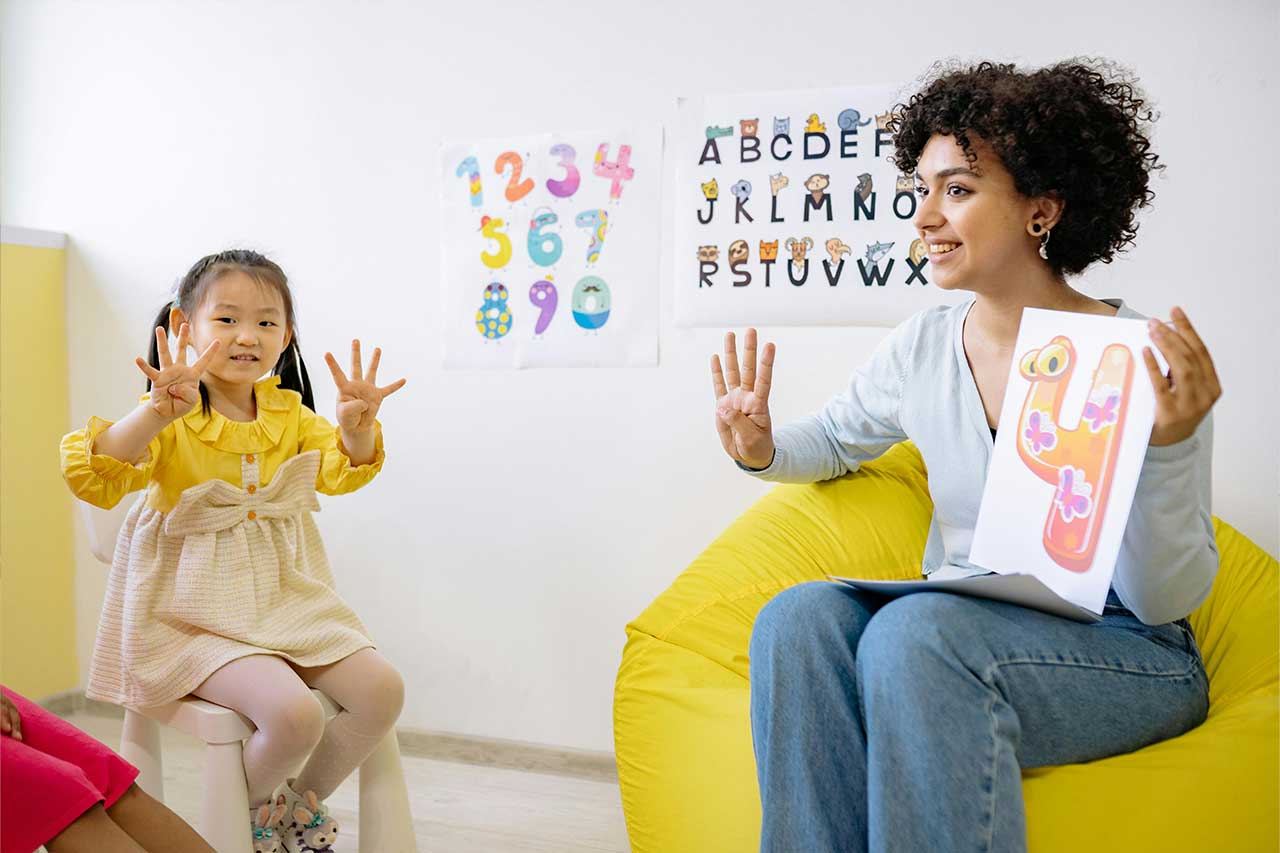What Does SD Mean in ABA Therapy?
The medical field has no shortage of terms, abbreviations, and acronyms that practitioners use as shorthand between one another and with knowledgeable clients and their families. But hearing them when you’re new to a practice or treatment can be confusing.
In this article, we’ll explore a term and abbreviation you may hear while your learner is receiving Applied Behavior Analysis (ABA) therapy services: discriminative stimulus, or SD. You’d think it would be abbreviated as DS, but no! SD, ABA … already there’s an opportunity to land you in a bowl of alphabet soup! Read on to learn what is SD in ABA therapy, why it’s referred to as SD and not DS, explain its types and use, and share some examples of SD in ABA therapy along the way.

What is Discriminative Stimulus in ABA Therapy?
ABA therapy is a scientific approach used to understand and help improve behavior. It is often associated with autism because of its proven effectiveness with autistic learners, but it’s a therapy that can be impactful for people with other diagnoses too.
Definition of SD
Central to ABA is the concept of the discriminative stimulus (SD). An SD is a specific stimulus in the environment that signals the availability of reinforcement for a particular behavior. In other words, it is a signal that communicates to an individual what they should do.
Reinforcement strengthens the association between the SD and the desired behavior. When a person identifies an SD, they understand that a specific response will be reinforced, thereby increasing the likelihood of that behavior occurring again in the presence of the same SD.
Positive reinforcement (e.g., praise, reward) increases the likelihood that the behavior will be repeated when the SD is present. Negative reinforcement (e.g., removing an unfavored task) can also strengthen this association.
Learners with autism may have difficulty understanding social cues, so using clear and consistent SDs can help them learn appropriate responses.
Discriminative Stimulus: Why SD, not DS?
There are different stimuli used in ABA therapy, each one noted in shorthand with a capital S. The letter or symbol that follows the S indicates the type of stimulus. So, in ABA textbooks, discriminative stimulus is written as SD.
Types of SD in ABA Therapy
SDs can be categorized based on the sensory modality through which they are delivered. With ABA therapy being highly customized to each learner’s needs, each type of SD can be tailored to the individual’s needs and learning style, enhancing the effectiveness of the ABA therapy.
- Auditory SDs
These are sounds or verbal instructions. A therapist may say, “clap your hands,” or a bell may indicate the end of an activity, as examples. - Visual SDs
These include visual cues like pictures, gestures, or written words. For example, a picture of a toy may serve as an SD for a child to request the toy. - Tactile SDs
These involve physical prompts like a light touch on the shoulder to initiate a response.

Use of SD in ABA Therapy
Conditioning a response to an SD involves repeated pairings of the SD with the desired behavior and the subsequent reinforcement.
For example, a therapist might use “sit down” as an auditory SD to indicate that the learner will receive praise or a meaningful reward for sitting down. By rewarding the learner with the same reward every time they respond to the SD, they learn over time that sitting down when they hear “sit down” results in that positive outcome.
What is the Controlling SD in ABA?
The controlling SD is the stimulus that consistently elicits the desired behavior due to its strong association with reinforcement. Said simply, the individual learns that a particular response to a particular stimulus will be rewarded.
As an example, let’s say that a therapist raising their hand is a visual SD for their group of learners to be quiet. If the learners respond by being quiet, they receive praise. In this case, the hand in the air is the controlling SD.
What is the Difference between SD and MO in ABA?
An MO, or Motivating Operation, affects the value of the reinforcement a learner is offered which, in turn, affects the likelihood of the desired behavior. So, if big brother talks up a particular toy, that would be the MO that would increase the value of the reinforcement. But if a new toy is introduced in an unfavorable environment, the toy is no longer as reinforcing because the place in which it became an option decreased its value.
Understanding the difference between SD and MO helps in designing effective ABA interventions.
Examples of SDs in the Real World
We have provided SD examples in ABA therapy, now let’s look at some auditory, visual, and tactile discriminative stimuli a learner may encounter in the real world.
Real-World Auditory SD Examples
- A doorbell ringing signals that someone is at the door. The doorbell is an SD prompting the behavior of answering it.
- The sound of an alarm clock signals it’s time to wake up. The alarm going off is an SD prompting the behavior of getting out of bed.
- A fire alarm signals that there is an emergency. The alarm is an SD indicating that the behavior of evacuating will lead to safety.
Real-World Visual SD Examples
- A green traffic light signals drivers to go, while a red traffic light signals them to stop. The color of the traffic light serves as an SD that prompts specific driving behaviors.
- An exit sign in a building signals to people where the nearest exit is located. The visual SD of the exit sign indicates to the learner where to move toward it in case of an emergency.
- An “Open” sign in a store window signals that the store is ready for customers, prompting the behavior of entering the store.
Real-World Tactile SD Examples
- A phone vibrating in someone’s pocket signals that there is an incoming call or message. The vibration serves as a tactile SD prompting the behavior of checking the phone.
- A light tap on the shoulder in a crowded place signals that someone wants to get your attention, eliciting the behavior of turning around to see who it is.
- The change in texture from smooth pavement to textured tiles at a crosswalk signals the approach of a street crossing, prompting the behavior of preparing to cross safely.

ABA Services at A Bridge to Achievement
At A Bridge to Achievement (ABtA), our exclusive focus is supporting learners with autism ages 2 to 21+. We offer ABA therapy sessions for individuals and small groups, as well as a number of programs to suit different age groups, needs, and schedules.
- Building Bridges is a preschool alternative designed for our youngest learners.
- BRIDGES is for ages 8 to 21+ who need support with daily living skills or a comprehensive complement to homeschool.
- Social Skills Groups are for children and teenagers looking to bolster their verbal and nonverbal communication through small-group therapy.
- The Practical Functional Assessment & Skill-Based Treatment (PFA/SBT) Program helps learners with severe and challenging behavior to build tolerance. This program has an emphasis on safety, dignity, and rapport.
- Vocational Skills Program (coming Fall 2024) will focus on building various job-related skills for teenagers and young adults.
- The Balance Program is a parent training opportunity aimed at creating joy and balance in the home. Conveniently delivered via telehealth.
We also offer the Balance Program, which is telehealth training for parents who are interested in creating more joy and balance at home.
There are so many ways the ABtA family can support yours – we hope you will connect with us if you have questions about ABA therapy or our programs. Support starts here.





